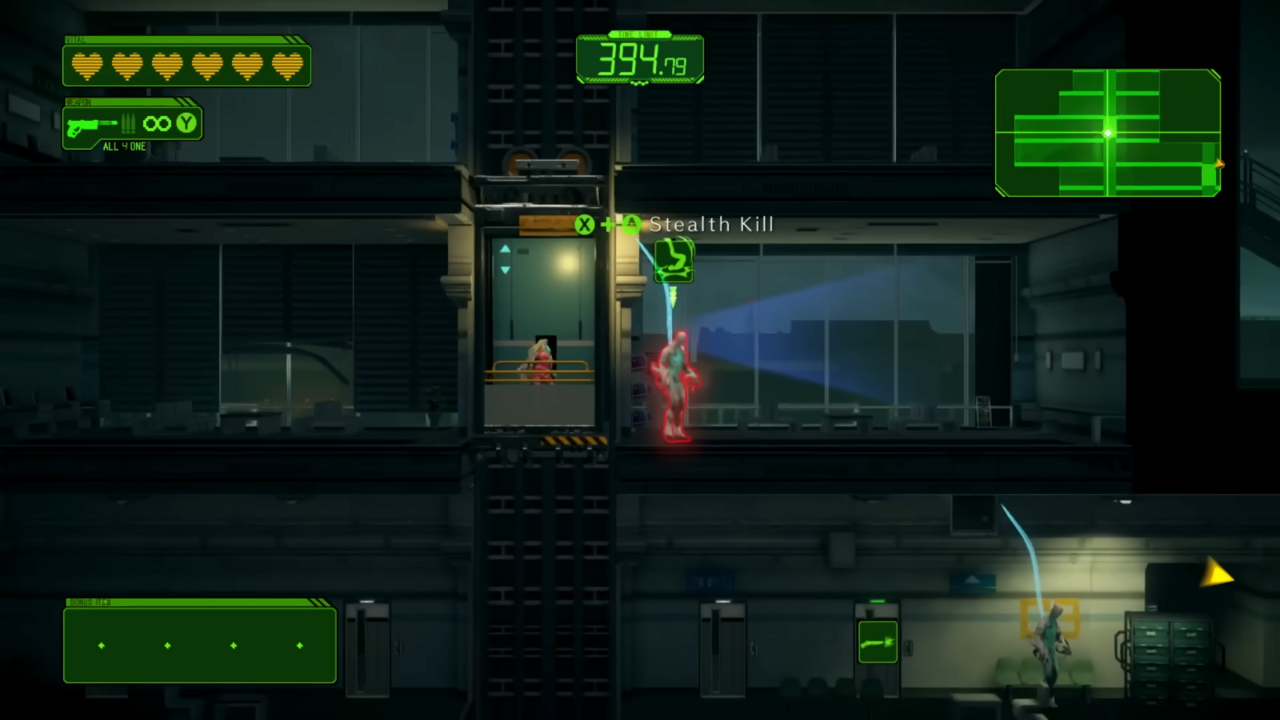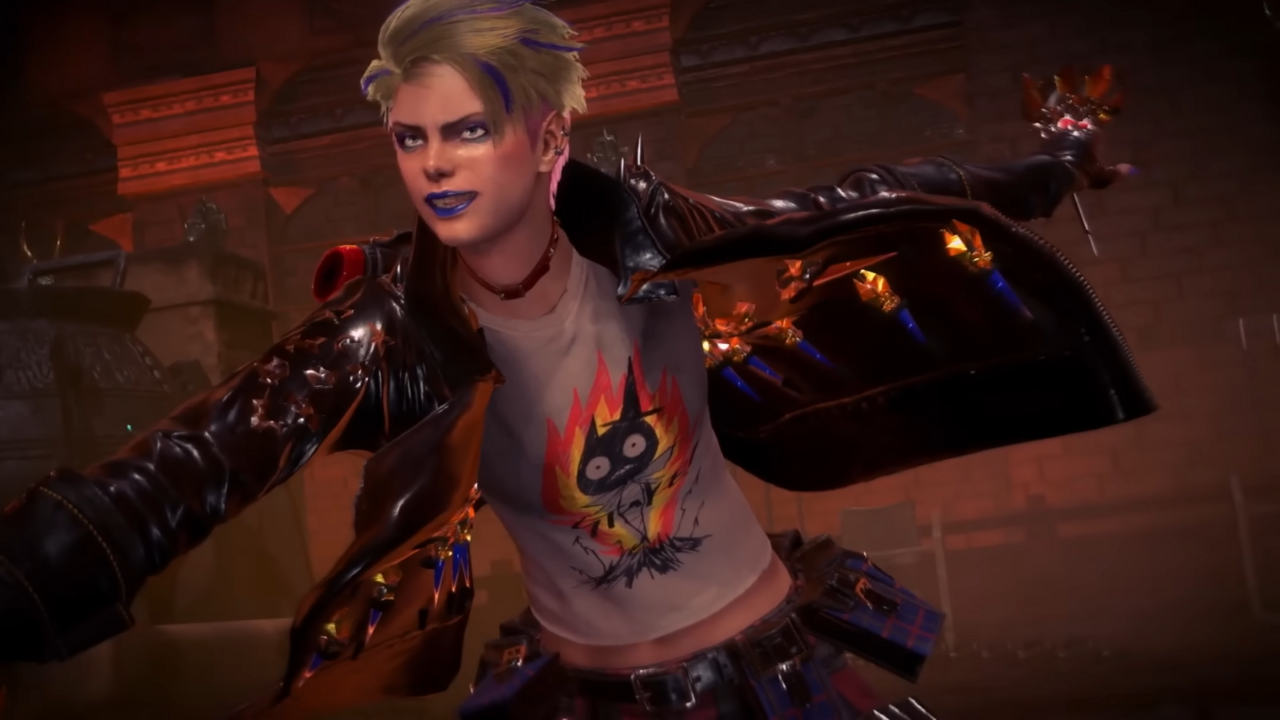There’s nothing more attractive than confidence, and Bayonetta 3 developer PlatinumGames is well aware of it. From the way Bayonetta sashays about the screen–left hand cocked on her hip while the other clutches her gun–to the sheer bombastic nature of the game itself, every part of Bayonetta 3 is unapologetically self-assured. Like the titular witch, Bayonetta 3 feels as if it doesn’t much care how it is perceived because it knows its own worth as a game that offers fast and fluid gameplay, jaw-dropping spectacles, comedy, and camp in a way very few others do. And it’s hard to argue with that when it’s true.
Like its predecessors, Bayonetta 3 is spectacular in the truest sense of the word. Though the game’s core gameplay is familiar, it ups the stakes, sending players on a multi-dimensional journey across time to save the world. If that’s not enough, this venture also comes with full-scale kaiju battles, exhilarating chase sequences, a new, sword-wielding character who is wildly fun to play as, and a series of 2D stealth-based chapters that follow Jeanne as she infiltrates enemy headquarters. All this, paired with the qualities that made Bayonetta 2 so beloved, make for a can’t-miss entry in the action games genre.
Bayonetta 3 begins with a bit more breathing room than its predecessors, but just barely. After introducing the concept of a multiverse filled with other Bayonettas, other Jeannes, and the gut-sinking feeling that everything we do has been done once before, it dives headfirst into its action-packed gameplay. As a supernatural storm overtakes New York City, Bayonetta is forced to take on the homunculi, a new enemy that are neither angel nor demon, and are hellbent on eradicating not only our Bayonetta’s universe, but every universe (and every version of Bayonetta) imaginable.
Naturally, it falls upon Bayonetta to put a stop to these plans. Carrying over from the previous games are the basic kick, punch, and shoot abilities, which can be linked together to form complex and visually-delightful combos, as well as both Torture attacks and Climaxes for over-the-top flourishes. Bayonetta also still relies upon perfectly-timed dodges to enter Witch Time, a state in which all enemies are slowed down to a near-halt as Bayonetta rips through their defenses with bullets and beatdowns. Though performing combos (and avoiding taking damage) is still vital to winning battles and earning high-ranking medals, Bayonetta 3 pivots away from the previous games’ dependence on weaving together masterful combos to fill your magic meter, instead allowing it to fill throughout combat in order to charge up Bayonetta’s show-stopping abilities. Two such abilities are Demon Masquerade and Demon Slave, the former of which allows Bayonetta to take on the form of one of her demons to utilize part of their abilities, while the latter summons an infernal demon you can control in battle through risque dance. This adds an interesting bit of strategy to the action game, as you must ensure your dance is not interrupted by an attack, consider which demon works best in each battle, and manage your magic meter to ensure you’re ready to summon a demon when the opportune time presents itself. At times, controlling these demons can be a bit chaotic, particularly the game’s new train demon, Wartrain Gouon, which requires you to place down tracks while in battle before it emerges and dishes out massive damage. However, once you slow things down and get deliberate about your movements, they quickly become a blast to use.
The same can also be said about combat as a whole. Though Bayonetta 3 accommodates button-mashers, it is lightly punitive to such methods in a way that encourages growth. If you don’t make the time to learn how to properly time your attacks, dodges, and use of abilities, the game’s increasing difficulty will prove to be too much. Of course you can grind levels and invest in accessories, healing items, and items that grant you upgrades to your health and magic bars to sustain your button-mashing ways, but Bayonetta 3 gives you all the tools you need to learn and succeed the way it’s intended, offering up visual cues that instruct you to interact with targets in unique ways and other helpful tips. However, this does not mean there’s no room to incorporate your own style.

In Bayonetta 3, you can equip two weapons, each with their own unique kit of skills and combos, allowing for you to quickly cycle between them in battle. In fights with large, slow enemies, using a tankier weapon can help Bayonetta take them down quickly. Conversely, high-speed enemies require high-speed attacks, lest you want to spend the bulk of a fight chasing them down and swinging at air. Other weapons, such as my personal favorite, the Ignis Araneae Yo-Yo, excel at keeping you skyborne, which is a helpful skill when fighting enemies that deal close-range damage. Bayonetta can also cycle through three equipped infernal demons, each with their own fighting style. Though Malphas might have a fair bit of dexterity, monstrosities like Gamorrah are powerful yet slow. All this makes for a game that allows you to play how you want to play, which only adds to how powerful you feel while doing it, as well as the game’s overall replayability.
In addition to standard battles, Bayonetta 3 also boasts stunning cinematic showdowns that feature enemies of staggering proportions and culminate in jaw-dropping moments. From swinging across crumbling buildings as a sort of hellish Spider-Woman to entering spectacular kaiju fights complete with devastating beam attacks, the game is unpredictable and relentlessly exciting. This is all made even better by the fact that Bayonetta 3 ensures the player stays in control throughout most of these sequences when they could just as easily cast that interaction aside in favor of quick time events. I can’t think of many action games that feel as frenetic and fun as Bayonetta 3, or play with scale and framing to quite the same effect. Bayonetta 3 does a fantastic job of honoring its titular character with battles every bit as big, bold, and beautiful as her.

Outside of combat, the game is similar to previous entries in that it has light open-world sections where Bayonetta can traverse as she seeks out encounters, referred to in the game as verses. The environments range from Tokyo subway stations and collapsing skyscrapers to ancient ruins and historical landmarks, and feature hidden secrets, challenges, and areas where time has been distorted. In each of these zones, you play as a young Bayonetta attempting to rewind or fast-forward time in order to solve a puzzle and progress. While not too profoundly stylized or robust, these areas are enjoyable to search around.
However, even with all these abilities, saving the world is a tall task for one witch alone. Fortunately, Bayonetta has two powerful friends eager to lend her a helping hand. The first of these is longtime companion Jeanne, who adds her own unique flavor to the game in the shape of 2D stealth challenges. Though they’re fairly simple and short, these challenges are a blast to play and add a sort of campy Katana Zero vibe to the game as Jeanne traverses floors silently, takes down enemies, crawls through ducts, and stumbles into some humorous interactions.

Bayonetta also finds help in a young and mysterious katana-wielding woman named Viola. Though Viola might project a devil-may-care attitude as she trudges around in her low-rise plaid pants, knee-high combat boots, and distressed leather jacket, this newcomer is a bit of a softie, a fact Bayonetta has far too much fun with. However, this doesn’t mean Viola isn’t tough as nails. Equipped with a katana and her own infernal demon called Cheshire, Viola is a fast-paced blast to play as. While she uses the same core mechanics as Bayonetta, there are a few differences between the two, chiefly that you don’t have to control Chesire–the cat-like creature is confined in Viola’s blade, meaning you simply throw the sword and then bare-knuckle brawl while he is out–and you are able to both block and dodge attacks, though only blocking at precisely the right moment allows you to enter Witch Time. Viola also carries herself quite differently than the graceful, contortionist we know and love. Rather than perform delicate acrobatic movements, Viola moves like a dextrous swordsman, shrouded by a youthful energy that is almost electrifying. Whereas Bayonetta’s post-battle screen shows her arching backwards with a knowing smile, Viola’s is accompanied by a power chord and punk expression.
The dynamic between these three Time Witches is both charming and chaotic, and another high-point in a game full of them. It also reinforces one of the Bayonetta series’ most interesting themes: a woman does not necessarily grow more powerful the more masculine she is. Despite Viola being a lot more of a “tomboy” than the slender and large-busted Bayonetta, it’s made very apparent that Bayonetta is an artist with a gun and someone Viola can learn a lot from on her journey of growth.

Bayonetta 3 is a leap forward from 2–particularly in terms of how Bayonetta and the main party look–and it makes good use of the Switch’s hardware capabilities. Unfortunately, there are noticeable deficiencies, too, and as newer titles hit current-gen consoles, it becomes increasingly clear that the Switch is struggling to keep up. In the case of Bayonetta 3, this results in often barren locations, and NPCs that look severely outdated. The game does a lot to ensure your eyes are focused on the action, where it looks vibrant with colors and detailed with particle effects. However, allow yourself to look at the background and you’ll be met with simple geometry, crude textures, and dull tones. Based on my playthrough, this seems to be a tradeoff that Platinum Games has made to ensure the game runs well regardless of if players are using the Switch in handheld mode or docked, but it’s one that comes at a very visible cost.
What Bayonetta 3 lacks in visual fidelity, however, it more than makes up for with style. With bright colors and a jazzy feel to the game, it ventures closer to Atlus’ prowess with style. The music is also fantastic. From dramatic numbers filled with operatic vocals to the fast-paced pop-punk bops that play when Viola is on the field, the game does not lack in tracks that are just as grand and as energetic as Bayonetta 3 itself.
I’m not sure whether it’s because of the game’s fantastic music, the use of the word “verse” to refer to encounters, or her over-the-top style, but when I think of Bayonetta I can’t help but imagine her as a popstar. Bayonetta 3 feels like her Las Vegas residency: a lavish and spectacular show where each number is beautifully choreographed, every song is a banger, and the guest appearances are sure to delight. It’s a fast-paced and joyous adventure that achieves its goals with an abundance of charisma and style. While it might have taken the better part of a decade to get here, the queen is back, and she’s ready to serve.

